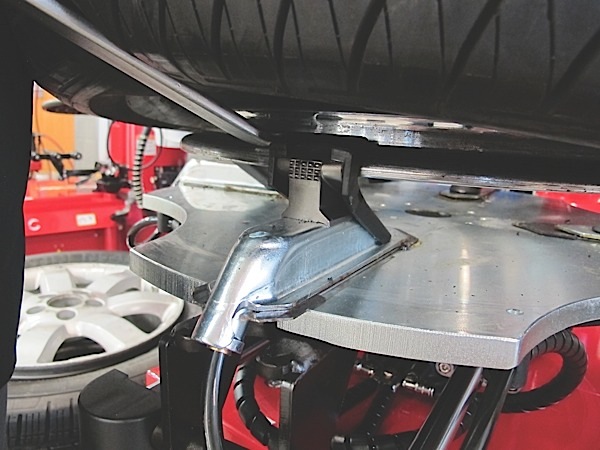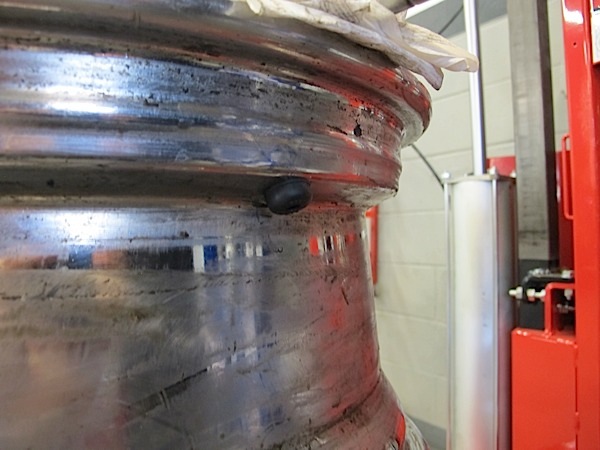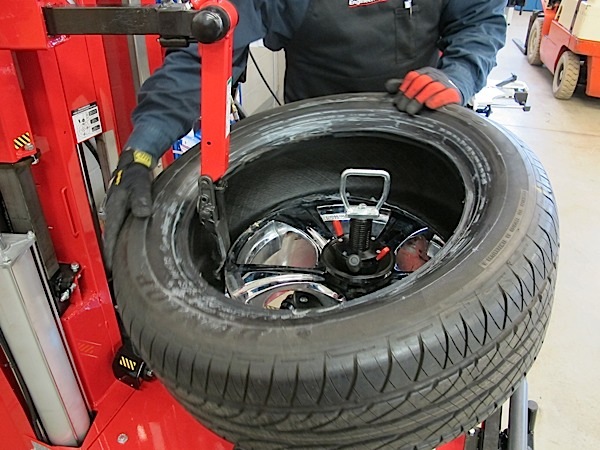I claim expertise in many areas, including high-performance driving, tire safety, vehicle dynamics, diaper changing and calling in wild turkeys. Mounting tires on wheels is not on that list.
My only wisdom about tire mounting will be…
Miscue No. 1: Failure to get proper training.
If you’re going to operate a tire machine, demand to be fully trained. If you manage those who operate tire machines, require they get the needed expertise. Otherwise, the operator can just go to the emergency room and break his arm there; it’ll save the ambulance ride.

I once tried to teach myself how to work a tire-mounting machine. I got a couple of tires demounted and mounted before I bent my first wheel. This was a simple-to-use machine from the late 1970s, so chuckle away at my youthful optimism and complete incompetence. The next mounted easily.
My reaction, “Hey, this isn’t THAT hard,” is much like, “Hey, y’all watch this,” but without the alcohol or the lengthy hospitalization.
On the next wheel, I got my arm stuck lengthwise between two moving things. I heard some very scary creaking and cracking before the machine stopped. Fractures of the ulna, radius and metacarpals would have been lovely because I didn’t have health insurance. It was great to be young and stupid, and minus insurance.
“I’m glad I started mounting tires on a simple Coats 10-10,” said Tire Rack’s John Rastetter. “Today’s machines have too many levers and enough torque to do a lot of damage with only a few ounces of operator input.”
My personal tiremechanophobia (fear of tire machines) created a humorous situation when I was helping mount and demount heavy truck tires: I was like a long-tailed cat on a rocking chair-filled Cracker Barrel porch on a Sunday morning.
Since I’m not even an amateur with tire changers, I enlisted Pete Liebetreu, tire changer product manager at Hunter Engineering Co., as the expert for the rest of this column.
Miscue No. 2:
Not using the wheel’s drop center.

“All modern passenger vehicle wheels have an area called a drop center,” said Liebetreu. “It’s designed to accept the tire bead during mounting. This ancient and important fact is often overlooked, misunderstood or just ignored. We’ve found the main cause of tire damage during mounting/dismounting comes from operators failing to feed the tire into the drop center. All is not quite that easy: Drop centers in Extended Height 2 (EH2) wheels (for run-flats) or reverse wheels are harder than ever to work with.”
Miscue No. 3: Spacing the head too far away from the wheel rim.

“Technicians mistakenly think they are going to reduce the chance of scratching the wheel if they put the head far away,” said Liebetreu.
“Instead, this just increases the stress on the tire, lever, themselves and the machine. And it increases the likelihood of damaging a wheel. Make sure your wheel protection pieces are in good shape and put the head off the wheel rim by about 1/16-inch.”
Miscue No. 4:
Using bars instead of pushers.
“Using bars to press a tire into the drop center is a good way to end up with a goose egg on your forehead,” said Liebetreu. “Tire changers can be purchased with various levels of pushers. Use them to do the pressing for safety of the operator and the equipment.”
Miscue No. 5:
Not taking care when clamping aluminum wheels.
“It is not good to leave bite marks on your customers’ wheels,” said Liebetreu. “Additionally, open-spoke and black-painted wheels really show the damage a tire changer can do.”






